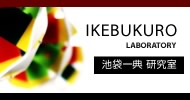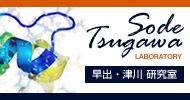Team:Tokyo-NoKoGen/Achievement
From 2012.igem.org
(Difference between revisions)
| Line 38: | Line 38: | ||
<BR> | <BR> | ||
<BR> | <BR> | ||
| - | <div align=center><img src=https://static.igem.org/mediawiki/2012/6/67/Figure.e.jpg height=60% width= | + | <div align=center><img src=https://static.igem.org/mediawiki/2012/6/67/Figure.e.jpg height=60% width=70%></div> |
<BR>Left:BBa_K769022 | <BR>Left:BBa_K769022 | ||
<BR>Middle:BBa_K769011 | <BR>Middle:BBa_K769011 | ||
Latest revision as of 03:42, 27 September 2012
- achievement
Achievement
We have successfully managed to accomplish the following task shown in the table below (Fig.1)

Fig.1 Table of a list of our achievement
We have also managed to successfully construct and evaluate the following BioBrick
Sensory rhodopsin
BBa_K769003
Pconst.(High)-RBS-NpSRII-9a.a.linker_NpHtrII-EnvZ-Double terminator-PompR-RBS-GFP-Double terminator
Tokyo-NoKoGen 2010 created a chimeric sensory rhodopsin with a chemotaxis transducer tar from E. coli (BBa_K225001). We created a blue light sensor, a chimeric sensor rhodopsin, the same sensor domain of rodopsin from Natronobacterium pharaonis (N. pharaonis), and tested to see if the GFP under PompC will show any expression under the light, the light signal received by the sensory rhodopsin. The figure below shows the result. As you can see, we have found that contrary to what we expected, the blue light sensor responded to light by turning off the expression of GFP, and turns on GFP expression in the dark.

The lux operon

Left:BBa_K769022
Middle:BBa_K769011
Right:BBa_K769020
BBa_K769011
Promoter(Pbad)-RBS-lux operon-DT
we have cloned the lux operon Photobacterium phosphoreum and expressed it under arabinose inducible promoter, PBad. We have expressed it inside E. coli and evaluated the luminescence at different temperature, at 30 and 20 degrees celcius. As you can see from the graph below, the strains grown under 20 degrees celcius showed a 5 times higher luminescence intensity than those grown under 30 degrees.

BBa_K769020
lux operon(K769011) + lumP(K769019)
To obtain luminescence of a different color, we have aimed to use a protein called lumazine (lumP) to shift the wavelength peak of the lux luminescence more towards blue light. As you can see in the figure, the wavelength shifted from 487 to 478 nm.

BBa_K769022
lux operon(K769011) + GFP(I13522)
To obtain another color of a luminescence, we have aimed to use the phenomenon BRET, expressing the GFP together with lux operon, so the luminescence of the lux operon will excite the GFP. As a result, we obtained a wavelength shift in the construct expressing the two together.

 "
"





